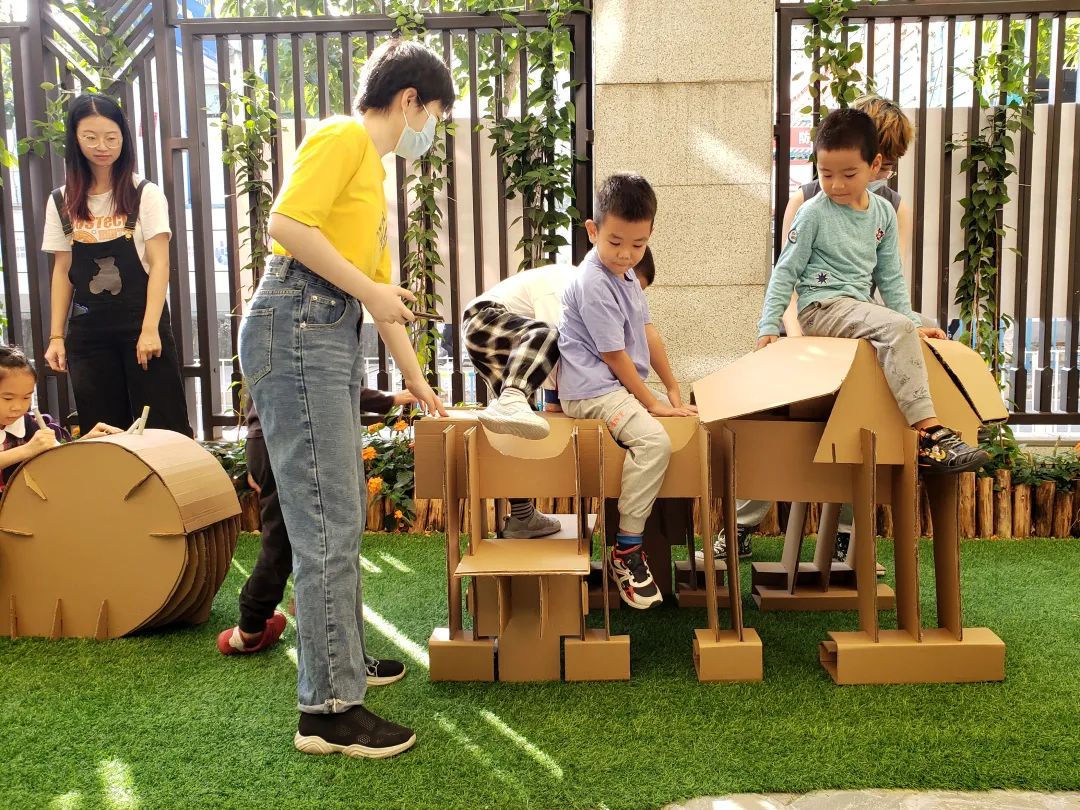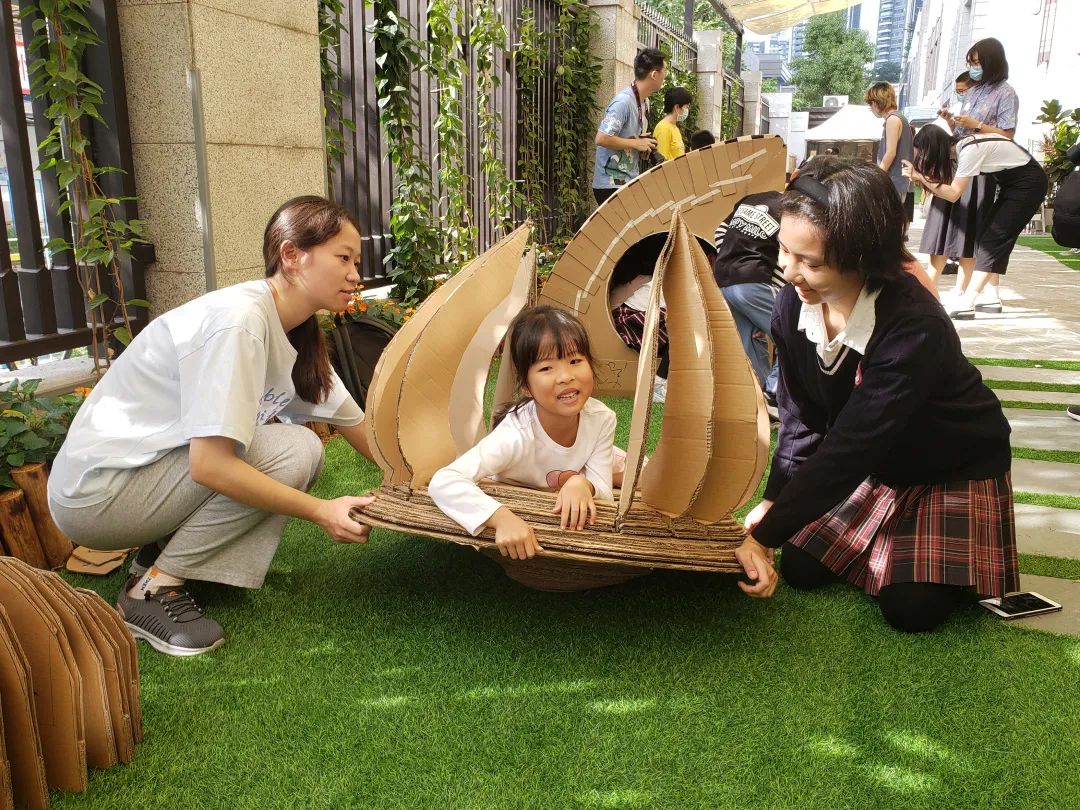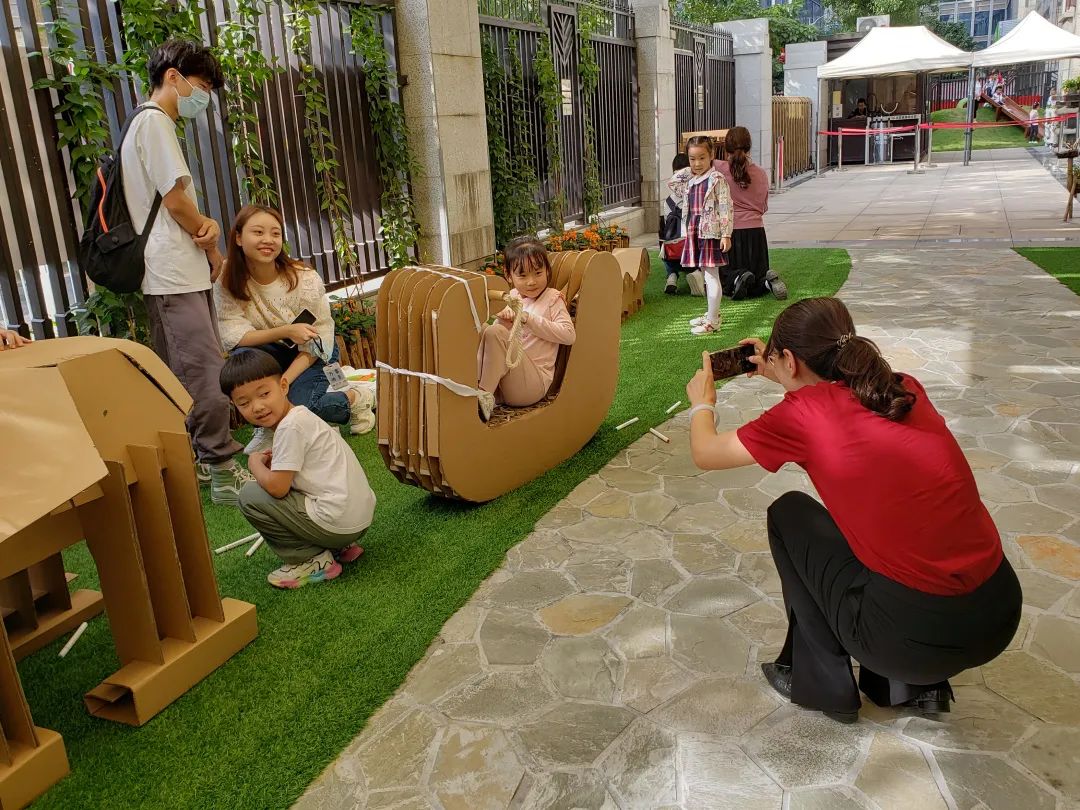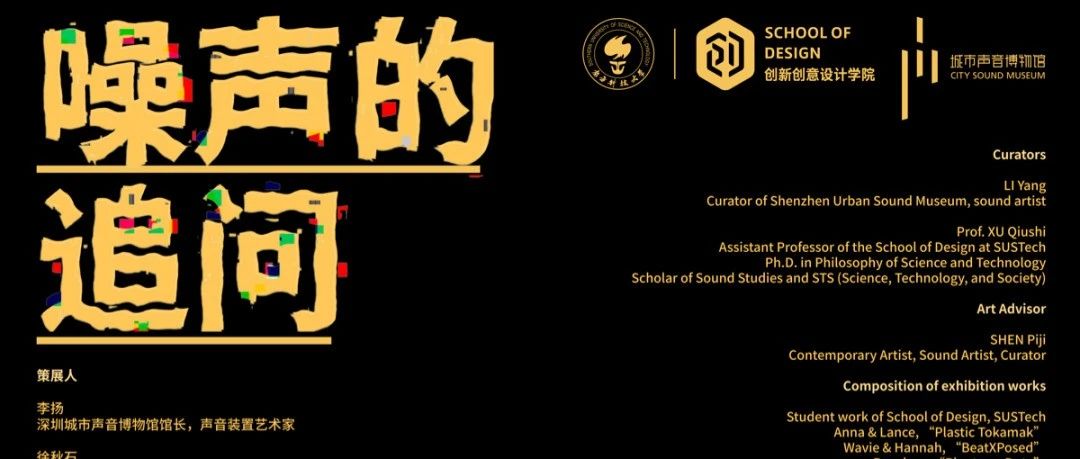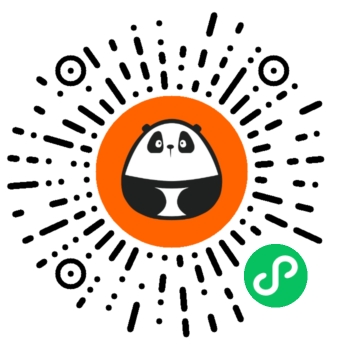- 0
- 0
- 0
分享
- 课程回顾 | DS202 儿童家具设计之旅
-
原创 2021-12-24
/ SUSTech School of Design / 儿童家具设计之旅 The Design Adventure of Designing Furniture for Children 设计学习包含许多创造性和技术性的技能,如探索、研究、测试、观察和反思。在南科大设计学院二年级的第二门设计工作室课程DS202《从二维到三维》里,学生体验和学习了这些技能。课程邀请学生用普通纸板设计三维实体,具体项目是为幼儿园年龄段儿童设计纸板椅。在南科大附属幼儿园的大力支持下,设计学院的学生与5-6岁的儿童合作,共同构思了新型游戏椅的创新想法。 Learning to design involves many creative and technical skills, including exploration, researching, testing, observing and reflecting. In the second design studio taught at the new School of Design at SUSTech, students experienced all of these in the second year course DS202 “From 2D to 3D”. The course invited students to design three-dimensional objects from flat sheets of regular cardboard, in the shape of cardboard chairs for kindergarten age children. With the generous support of the SUSTech Affiliated Kindergarten, the School of Design's students could collaborate with 5-6 year old children in developing innovative ideas for new types of play-chairs. 设计学院通过提供丰富的环境来培养学生的创造性思维,让学生发挥主观能动性,参与设计项目,探索、反思和测试他们的想法。学生们以两人一组进行项目合作,很快便发现,为小孩子设计一个纸板椅子这个看似简单的任务带来了许多挑战。 The School of Design nurtures students’ creative thinking by offering rich environments in which students engage in design projects based on their own initiatives to explore, reflect on and test their ideas. Working in teams of two, the design students quickly discovered that the seemingly simple task of designing a cardboard chair for small children brought with it many challenges. 设计伊始,学生们与他们小小年纪的客户进行了第一次会面,从人体工学的角度了解孩子,确保纸板椅大小合适、安全舒适。通过与孩子直接沟通,该阶段的研究为学生提供了丰富的机会,能够了解用户的需求和喜好。儿童天性活泼、富有探索精神和创造力,对于学生而言,与他们的沟通并非易事。设计学院学生盛玥表示:“充分了解孩子们的想法很困难,但我们最终从这次经历中学到了很多东西。” To begin the design process, students first met with their young clients, understanding children’s ergonomics to make sure the cardboard chairs would be of a suitable size, safe and comfortable to use. This phase of research offered rich opportunities to understand user needs and preferences by working directly with the children. While children are naturally explorative, playful and creative, communication did not come easy to all students: “We found it is difficult to understand children’s ideas well, but we eventually learned so many things from this experience,” commented design student Sheng Yue. 设计学院学生唐子麓谈到,最富有成效的会面,是在以创造性的方式完成任务时,放弃先入为主的想法。“我学到如何访谈用户,聆听他们的观点。幼儿园的孩子们和我说了很多他们的想法,我意识到,在开始设计时,我不应该以先入为主的期望去完成任务。(所以)我没有让孩子们画他们想要的椅子,而是画他们喜欢的东西。因此,我们获得了许多有意思的画,那些画虽然并非关于椅子,但却给了我许多灵感。” The most fruitful encounters, as design student Tang Zilu explains, are encouraged by letting go of preconceptions when aiming for creative ways of approaching a task: “I learned to interview and listen to the users’ views. The kindergarten children told me a lot about their opinions and I understood that when starting to design, I should not approach a task with predetermined expectations. I did not ask children to draw the chair they wanted, but to draw what they love. From this, we got many interesting pictures. They were not chairs but they gave me a lot of inspiration.” 与此同时,学生们学习了纸板使用的技术和知识,通过试验不同方式,用纸板制作了充满趣味性且结构坚固的造型。学生们通过研究纸板的材料特性,了解了纸板生产对环境的影响及相关碳排放,同时明白其作为可回收材料的优点和在包装行业的角色。学生们迅速制作了阐述他们设计思路的小模型,并将这些小模型带回南科大附属幼儿园,与孩子们一起讨论。在讨论中,孩子们再次贡献了新的、意想不到的改进意见。 At the same time, students studied technical aspects of working with cardboard, experimenting with ways to build interesting and playful yet structurally strong shapes from flat sheets. Researching the material properties of cardboard, students learned about the environmental impact of cardboard production and related carbon emissions, but also about its advantages as a recyclable material and its role in the packaging industry. Students quickly developed small models illustrating their design ideas at smaller scales and brought these back to the SUSTech Affiliated Kindergarten to discuss with the children, who again gave new and unexpected comments on how to improve the models further. (向右滑动查看更多照片) 课程安排非常紧凑,进度很快,在开课后的第24天便进行纸板椅的最后展示。设计学院学生们全力以赴,制作了全尺寸的椅子,并特别关注材料的高效利用和连接的精心设计。“切割纸板制作1:1尺寸椅子的过程是工作室课程里最让人难忘的”,设计学院学生张奕静说到,“在这个过程里,我们遇到了一开始没有考虑到的挑战。进行了一些测试后,我们最终找到了解决方法,这让我们非常开心。” The intense course moved at a quick pace, and the final presentation of the cardboard chairs took place after only 24 days. The design students dedicated much effort to making the full scale chairs, with special attention to effective material use and well-crafted connections. “The process of cutting cardboard to make the 1:1 scale chair was the most memorable aspect of the studio,” explains student Zhang Yijing. “During this process, we met challenging problems that we did not consider initially. After doing some tests, we finally found ways to make it work, which made us very happy.” 纸板椅的最终评审在南科大附属幼儿园进行,设计学院学生、幼儿园的孩子和老师们一同参与到椅子的测试和讨论。孩子们兴高采烈地尝试了不同的纸板椅,他们有趣、新奇使用椅子的方式也让学生们收获了意外惊喜。虽然部分椅子结构较为脆弱,难以承受孩子们活力十足的玩耍,学生们仍明白这是一次非常宝贵的学习经历。90多个孩子灿烂的笑容对于学生和老师们而言,都是一份特别的嘉奖。我们希望孩子们能记住这次充满乐趣和创造的经历,由此产生对设计的兴趣。 The final review of the cardboard chairs took place at the SUSTech Affiliated Kindergarten, where design students, kindergarten children and kindergarten teachers all joined into the chair testing and discussion. The children enthusiastically tried out the different cardboard chairs and surprised the students by using them in playful and surprising ways. While some of the chairs were too delicate to handle the impact of children’s energetic play, the design students still understood this as a very valuable learning experience. The wide smiles of over 90 children were a very special reward for students and teachers alike. We hope that some of these children will remember this joyful creative experience and may become interested in design in the future! 最后,特别感谢南科大附属幼儿园邵笑园长和她的团队对本项目的大力支持,更要感谢南科大附属幼儿园热情的孩子们,贡献了极具创造力的想法,展现了令人愉悦的好奇心和求知欲。 We would like to express our special gratitude to Ms. Shao Xiao, Director of the SUSTech Affiliated Kindergarten and her team for supporting this project. In particular, we thank the enthusiastic children of the SUSTech Affiliated Kindergarten for offering very creative ideas and delightful curiosity!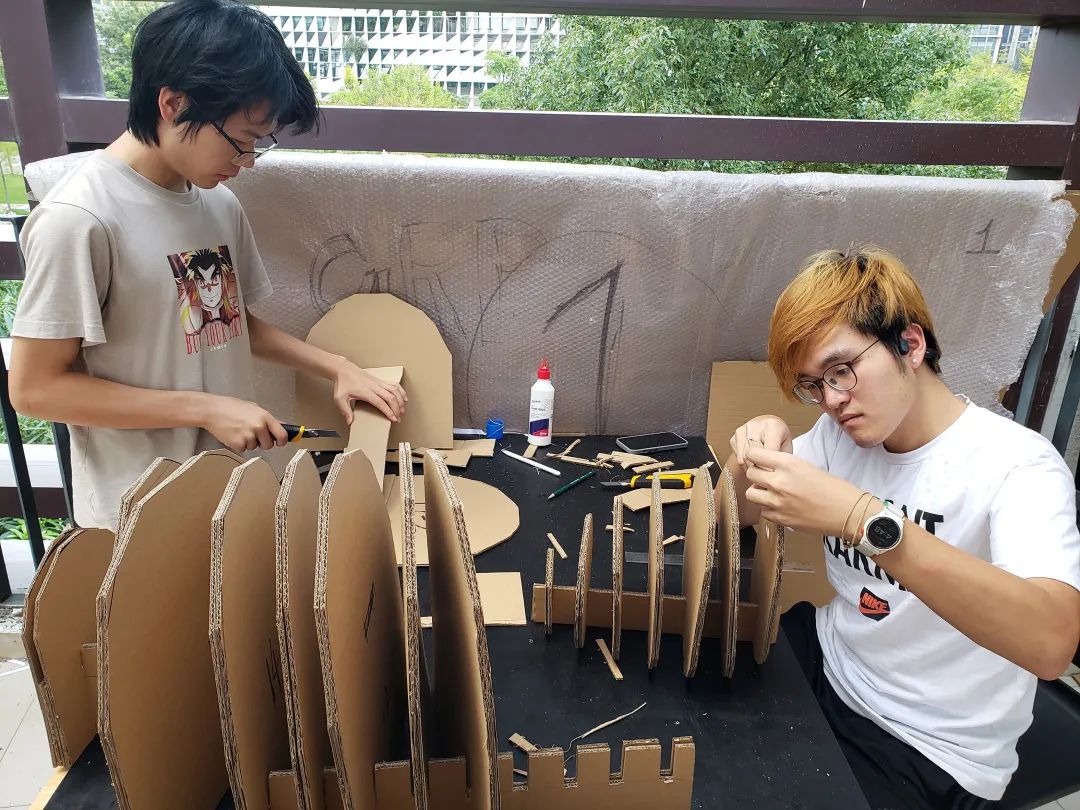
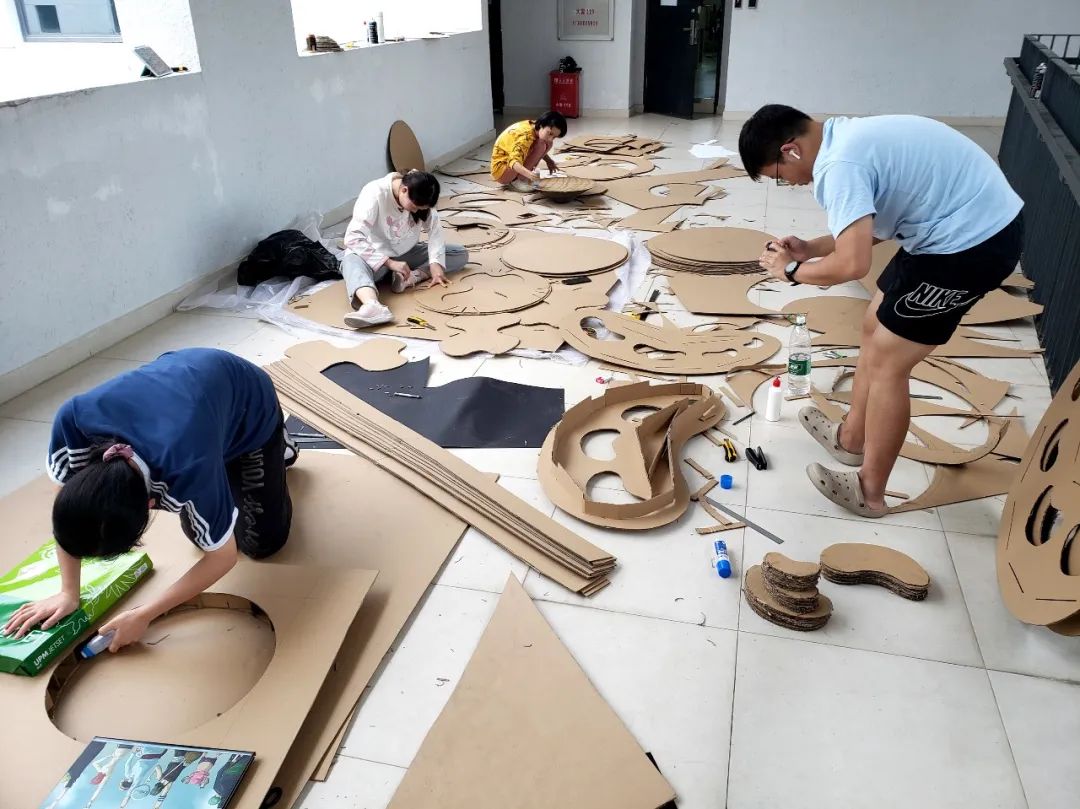
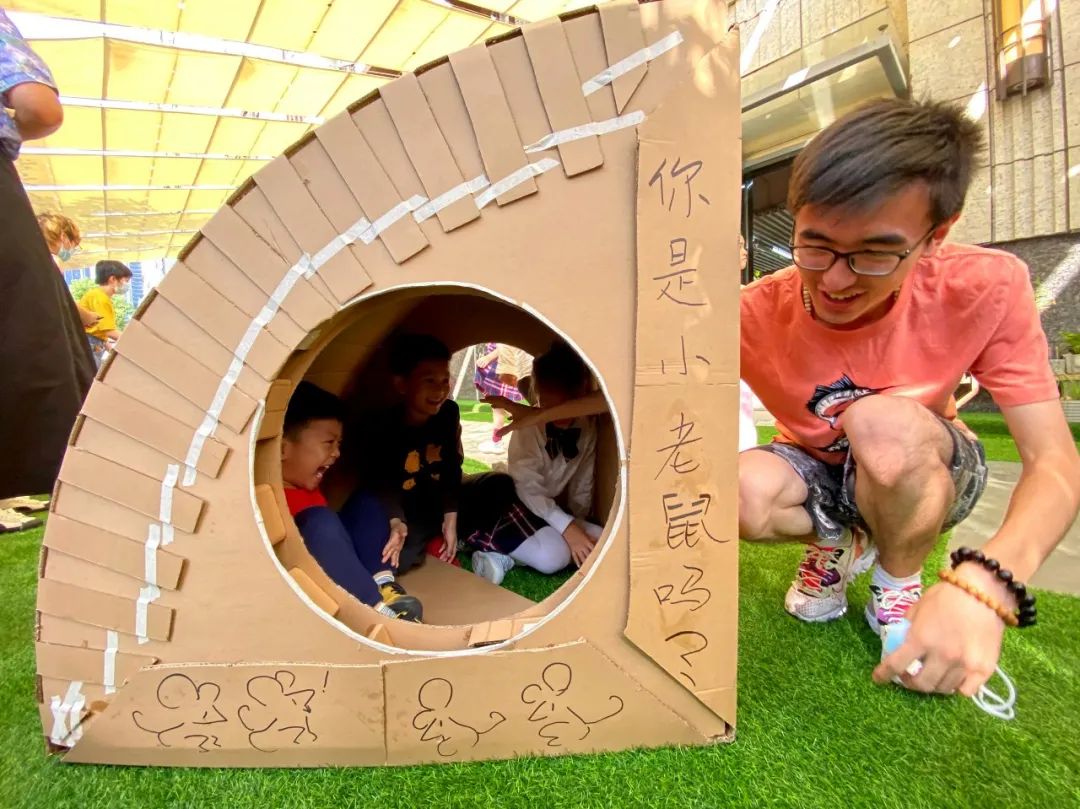
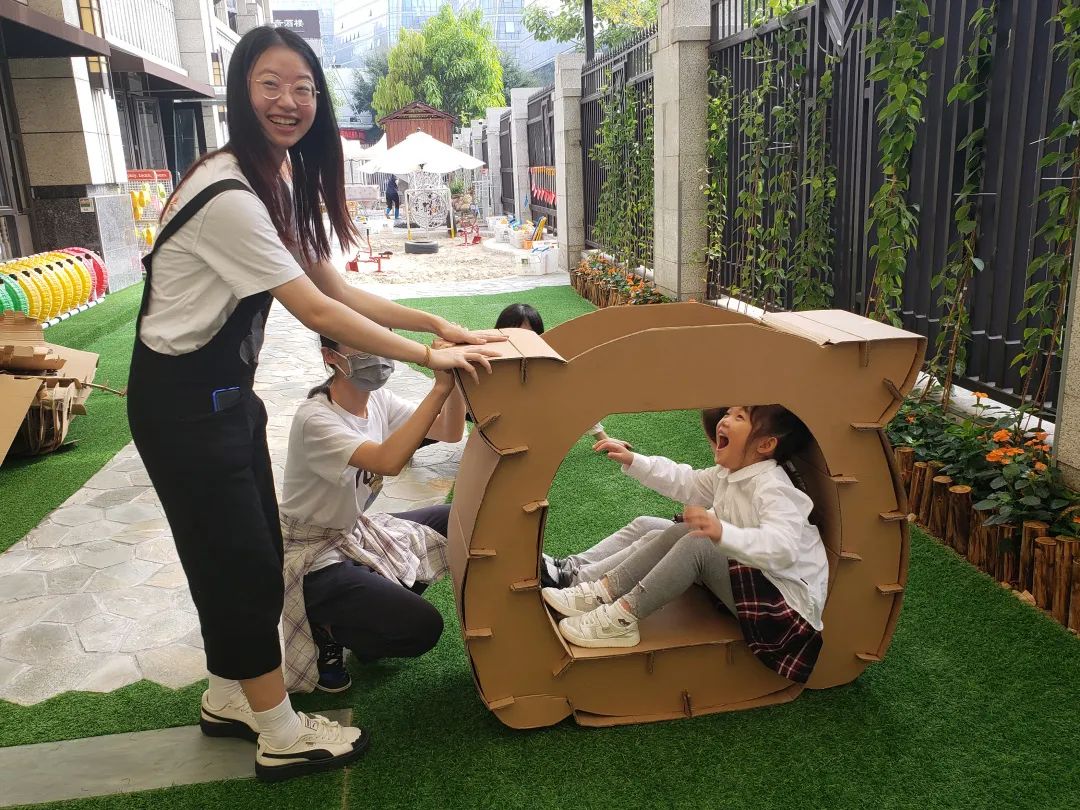
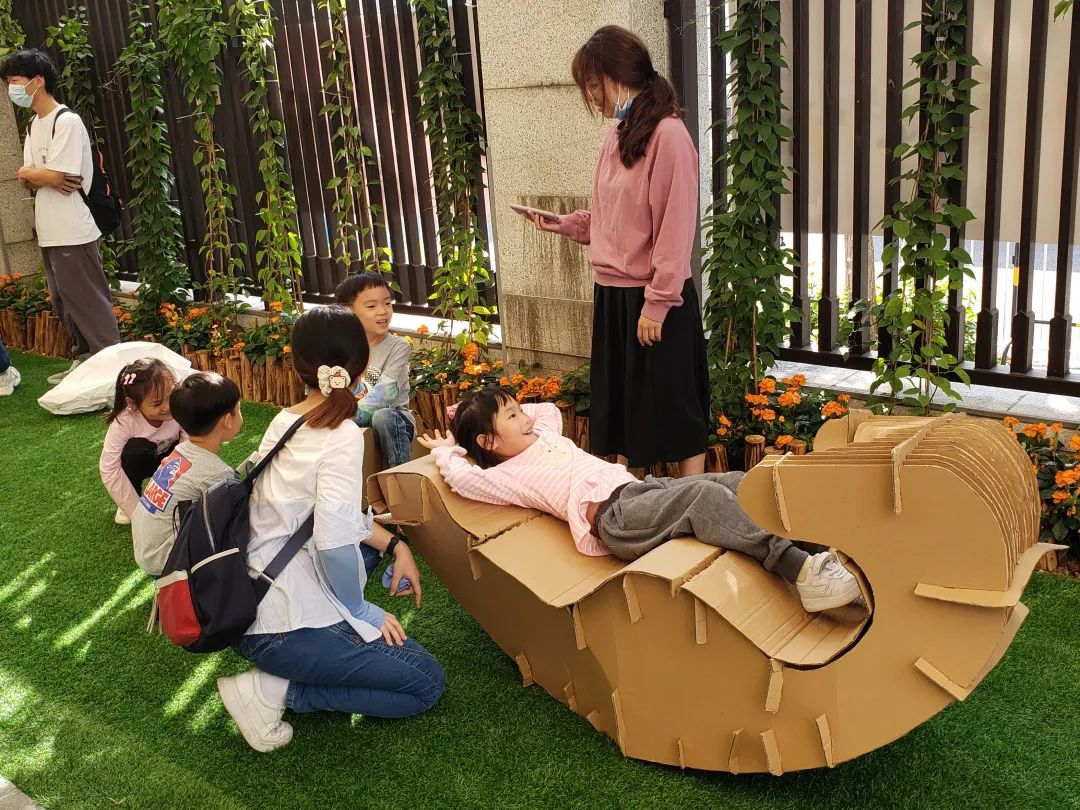
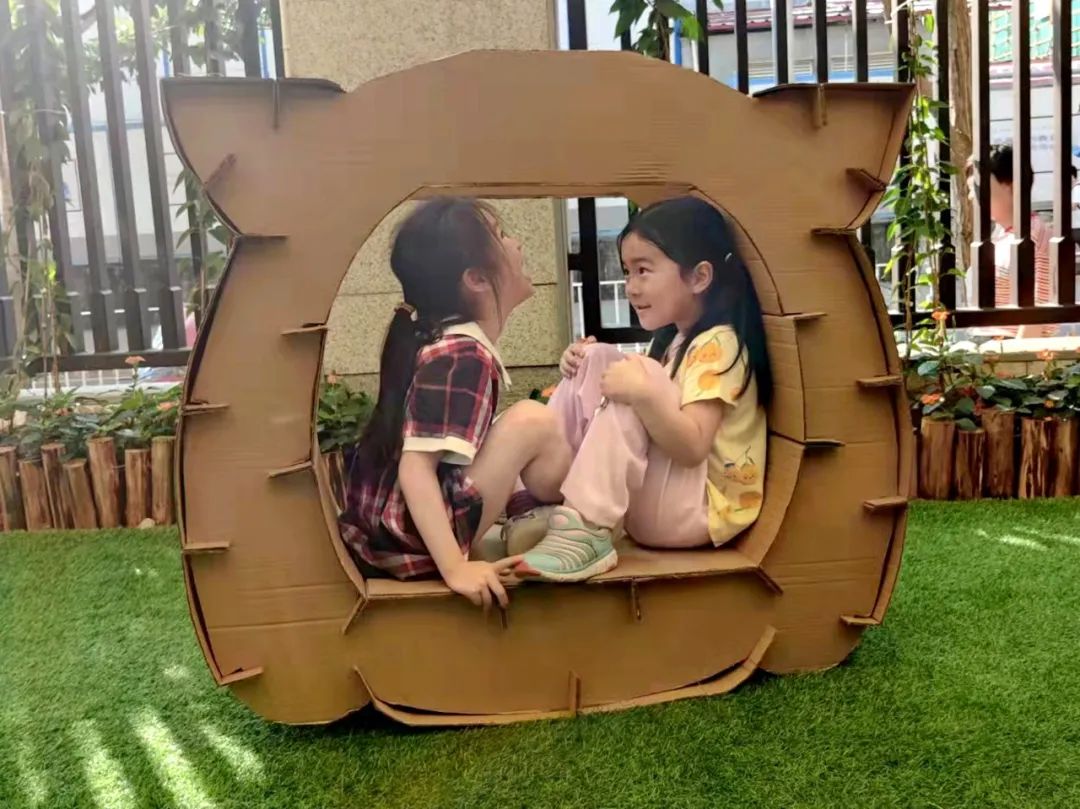
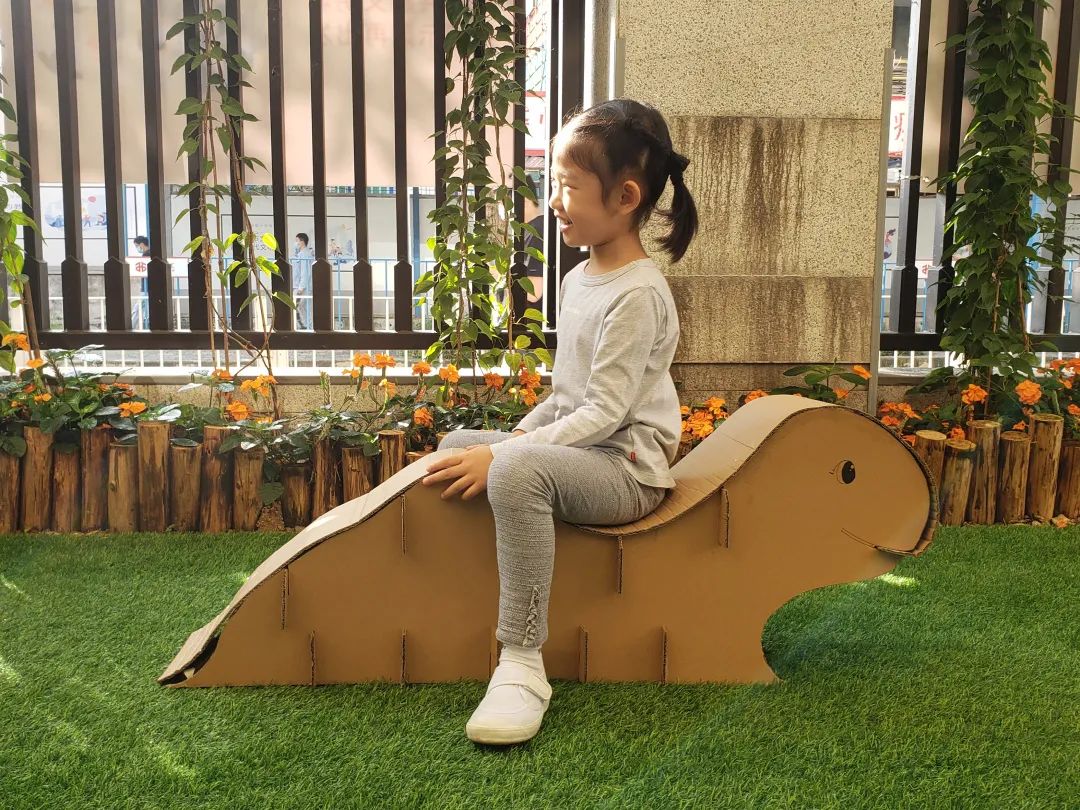

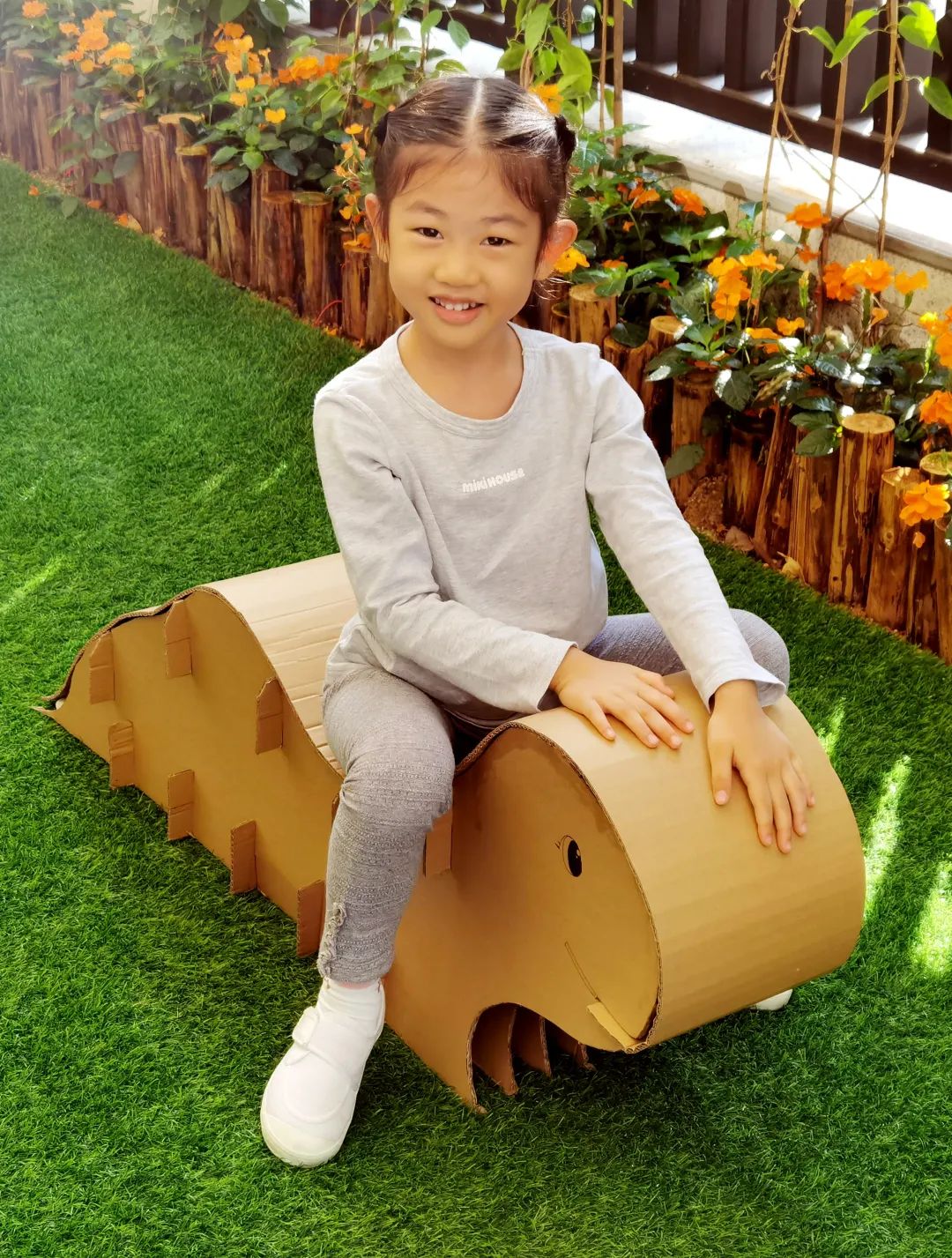
【设计学院学生 | Design Students】:胡泓毅、白钰溦、高缘、许彤、盛玥、邓訸心、唐子麓、张奕静、韩远凝、许潆心、李衔、张紫陌、胡城玮、薛仁超、闫思源、蒋含熙、梁万生。(HU Hongyi and BAI Yuwei, GAO Yuan and XU Tong, SHENG Yue and DENG Hexin, Tang Zilu and ZHANG Yijing, HAN Yuanning and XU Yingxin, LI Xian and ZHANG Zimo, HU Chengwei and XUE Renchao, YAN Siyuan and Jiang Hanxi, LIANG Wansheng and QIU Guo)
【指导老师 | Tutor】:何净植 (Christiane M. Herr)
【文字 | Written by】:何净植,张文康
【审核 | Reviewed by】:李旭
-
阅读原文
* 文章为作者独立观点,不代表数艺网立场转载须知
- 本文内容由数艺网收录采集自微信公众号南方科技大学创新创意设计学院 ,并经数艺网进行了排版优化。转载此文章请在文章开头和结尾标注“作者”、“来源:数艺网” 并附上本页链接: 如您不希望被数艺网所收录,感觉到侵犯到了您的权益,请及时告知数艺网,我们表示诚挚的歉意,并及时处理或删除。


